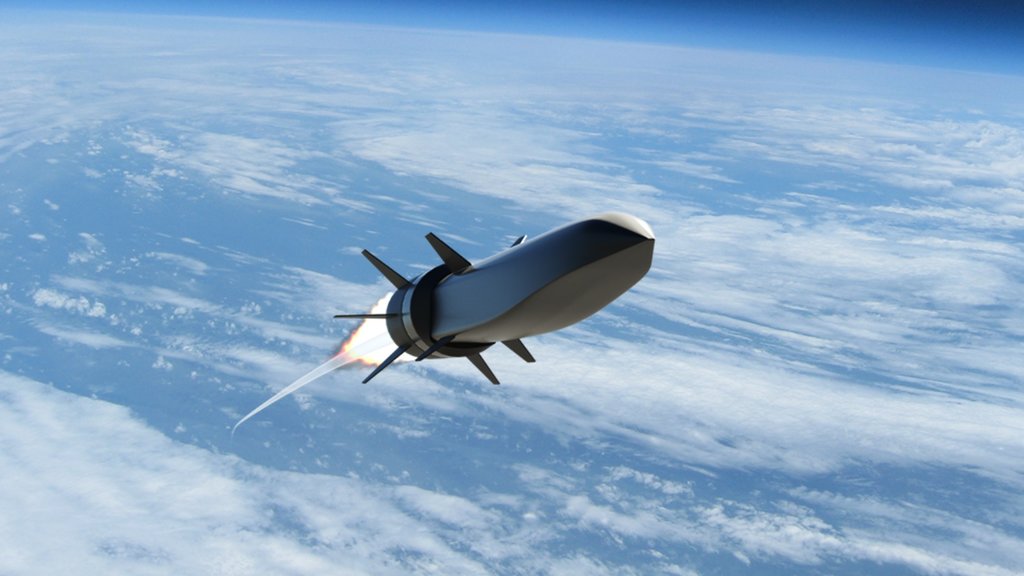Feature
Scramjet engines: unlocking the hypersonic capability
At the cutting edge of missile propulsion technology, scramjet engines offer combustion capability, but at supersonic speeds. Tim Fish reports.

The US Navy, in collaboration with the US Army, conducts a static fire test in 2021 of the first stage of the 34.5” common hypersonic missile that will be fielded by both services. Credit: US Navy photo courtesy of Northrup Grumman
The US Defense Advanced Research Projects Agency (DARPA) is enhancing scramjet engine technology under the More Opportunities with the Hypersonic Air-breathing Weapon Concept (MoHAWC) programme.
In July 2023, DARPA awarded Raytheon a $81m MoHAWC contract to mature the design and demonstrate a hypersonic vehicle developed under the earlier Hypersonic Air-breathing Weapons Concept (HAWC) project. HAWC concluded in January in which industry teams led by Raytheon and Lockheed Martin had developed scramjet engine test vehicles for flight trials.
Raytheon was teamed with Northrop Grumman and Lockheed Martin with Aerodyne for HAWC and both teams successfully completed initial test flights, but the new DARPA programme will expand the operational capabilities of the scramjet engine.
Hypersonic cruise missiles operate at lower altitudes and are seen as a more cost-effective alternative to hypersonic boost glide vehicles, which are larger and employ ballistic missile technology and operate in the upper atmosphere. But the development of scramjet engine technology is the way in which a hypersonic cruise missile capability can be realised.
Defence forces want hypersonic weapons like these because the speed they provide allows them to deliver a payload to a destination very rapidly, which also makes them hard to defend against.
What makes a scramjet?
Pete Francis, chief engineer of Advanced Hypersonic Weapons at Raytheon, told Global Defence Technology that with the ramjet and scramjet engines there is no turbo-machinery, but the air is compressed in the inlet and partially compressed by the features of the airframe in front of the inlet.
The speed of the air going into the air intake will need to achieve the right temperature and pressure for combustion of the fuel at the levels needed. The difference with scramjet engines is that they operate more efficiently at hypersonic speeds and achieve much higher temperatures and pressures by allowing the airflow to pass through at supersonic speeds, only slowing it down slightly for the combustion process. The supersonic speed of the air makes the combustion process more efficient at certain speeds when compared to a ramjet.

An artist’s rendering showing the Hypersonic Air-breathing Weapon Concept (HAWC), which will integrate Raytheon Technologies’ air-breathing hypersonic weapons with scramjet combustors from Northrop Grumman. The HAWC programme is a joint effort of the US Defense Advanced Research Projects Agency and US Air Force. Credit: RTX
“The temperatures and pressures are very high even going into the combustor before any fuel is introduced,” Francis said. “Achieving those is the effect of the shape of inlet and how the inlet manages the airflow. The purpose of it is to compress is and convert some of the air momentum into a higher pressure before it enters the combustion chamber.”
The combustor can operate at a wide range of temperatures and engines are made using materials common in jet engine manufacturing. For the kinds of temperatures incurred in hypersonic flight the scramjet may employ special alloy and refractory metals.
“There are also different techniques for helping keep the engine cool enough so that the materials aren’t damaged, and you don’t have a structural failure.” Francis said. If the temperatures of the combustor walls need managing, then one example is regenerative cooling whereby a relatively cooler fluid from the fuel tank can be circulated through the passages in the engine before it gets combusted.
Going with the flow
Managing the scramjet engine involves the managing whole flow path and because the airflow going through is supersonic there are challenges dealing with shockwaves that may happen inside the flow path, there could also be back pressures coming forward from the combustor that will need an isolator to manage.
The shape of the exit nozzle is also shaped to increase the velocity of the air flowing through, which is similar to any air-breathing system. However, all these have to be controlled as a system.
“The air that flows into the inlet is going the nozzle in milliseconds because of the speed at which it is flowing, it is all one system, and from an aerothermal standpoint that is one of the challenges of a scramjet,” Francis explained, adding that the engine is also just one part of the hypersonic cruise missile.
“What we're designing is an entire system. It's a flying machine, so you have to take into account the airframe and all of the subsystems that are in it. There’s the fuel delivery system, and the engine, which becomes an integrated part as well, you really have to manage all of those, especially because of the dynamic and static pressures can be taxing on an aircraft in that flight regime and so you have to be conscious of all of that,” Francis said.
However, a hypersonic cruise missile with a scramjet engine will only begin to operate from about Mach 4 and above, so a delivery vehicle is needed to get the weapon to this speed first before it will work. It means that a hypersonic weapon will have to either be mounted on an aircraft, which will reach this speed on its turbo jets before diverting air through the scramjet, or alternatively a rocket booster is used to accelerate the vehicle to the speed for the scramjet to operate.
In August, Raytheon’s MoHAWC partner opened a new Hypersonics Capability Center (HCC) in Elkton, Maryland that is a facility designed specifically for large-scale manufacturing ramjet and scramjet propulsion systems, the latest stage in a process that could deliver to the US military a game-changing effector that will shape the battlespace for decades to come.